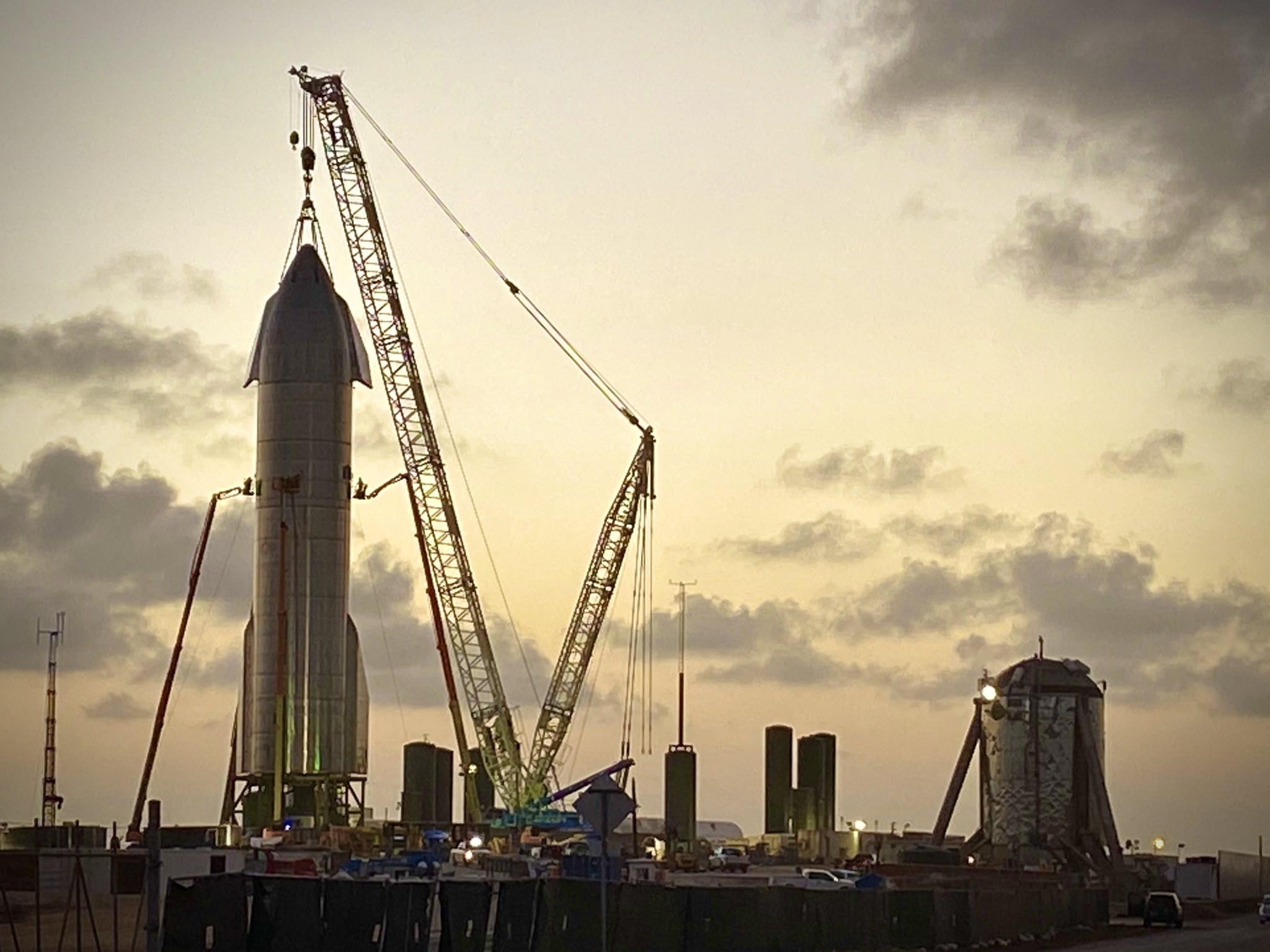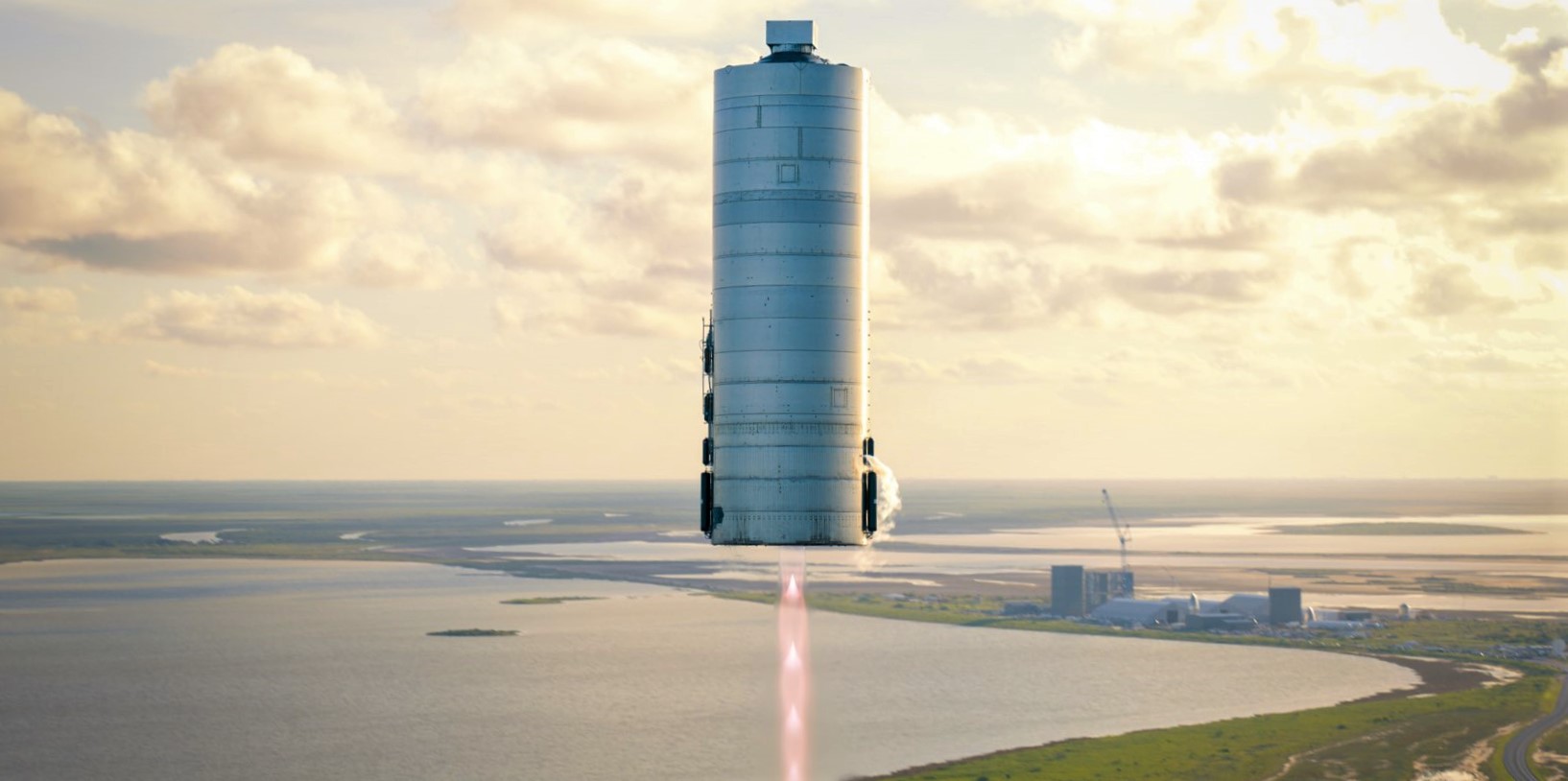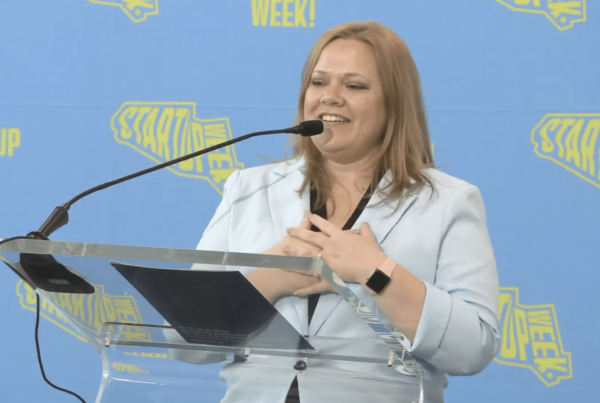By Brandon Lingle,
In the South Texas border village of Boca Chica, SpaceX’s 17-story-tall Starship dominates the flat marshland and stands ready to blastoff into the stratosphere. Engineers will soon launch the Starship, which is almost as wide as a city bus, to 50,000 feet and return it to earth in the most ambitious test so far for the vertically-landing spacecraft.
The trial will mark another step forward for the commercial space company in its quest to develop a reusable spacecraft to move people and cargo anywhere on earth and eventually to the moon, Mars and beyond.
SpaceX has already colonized Texas with sites in McGregor and Boca Chica, and as the Starship takes off, its momentum could accelerate the state’s commercial space economy into a new universe of jobs and business opportunities.
The company has had a breakout year so far. It’s sent the first NASA astronauts to space from American soil since 2011, celebrated the 100th successful Falcon 9 rocket flight and landed an Air Force contract — worth billions — to launch 40 percent of the nation’s classified payloads from 2022 to 2024.
SpaceX is also building a constellation of Starlink satellites that’ll provide global broadband internet. The service is in beta testing. Ector County Independent School District in West Texas announced it will be the first school district in the country to use Starlink.

And in mid-November, SpaceX is scheduled to send a 4-person crew to the International Space Station.
The company is beating its competitors because Elon Musk, SpaceX’s founder and CEO, “understands the speed of innovation and how to innovate, and that’s why he’s moving fast,” said Steve Kwast, a retired Air Force general and space exploration proponent. “He just wants to get to Mars so humanity has an escape valve when an asteroid or a virus or something starts threatening the human race.”
Matthew Gjertsen, a former SpaceX training and development manager, has seen Musk’s work up close.
With Musk, “everything comes down to first principles of engineering where … it’s not about what things have historically cost. It’s not about what we’ve done in the past,” said Gjertsen, who worked at SpaceX for four and a half years. “It’s just: what does physics say is possible, and combine it with absolutely no sunk-cost fallacy — they never succumb to that. Elon doesn’t care.”
SpaceX is privately held, making it difficult to determine how the company is performing financially.
Boca Chica Beach
At Boca Chica near South Padre Island, Port Isabel and Brownsville, SpaceX’s operations started slowly in 2014 and have ballooned over the last couple years.
“For the longest time,” the company only moved dirt and set up pylons, says Nathan Burkhart, BCIC Director of Marketing & Small Business Development. “That was about it.”
Currently, the launch center employs about 3,000, with as many as 1,500 workers on shift at any time, according to Burkhart.
“I’ve had conversations with folks that work at SpaceX, and they’re getting above average pay, especially for the highly-skilled workers,” he said.
And SpaceX is hiring. The company has more than 80 open positions at Boca Chica, including cooks, engineers, computer administrators, welders, electricians, pipe fitters and even a bartender.
“It isn’t until right now that we’ve seen this tremendous injection of resources and activity and attention that SpaceX has been putting on the (Boca Chica) site,” he said.
Kwast said the flurry of activity at Boca Chica is related to the Air Force’s frustration over Florida and California launch costs as well as the slow pace of government acquisitions and the military’s reluctance to take risks.
“I think SpaceX basically got so fed up with the Air Force charging them $13 million every time they would launch or land at either Cape Canaveral or Vandenberg Air Force Base that they decided to just build their own plot,” Kwast said. “Because the risk aversion in the Air Force is just killing them. It takes the Air Force eight years to do what SpaceX could do in one year — if they didn’t have to deal with the Air Force or the Space Force.”
”Once they start seeing that activity in the sky sooner rather than later, I think everybody down here is going to start understanding completely what this impact is going to look like in the future.
Nathan BurkhartBCIC Director of Marketing & Small Business Development
Burkhart doesn’t know yet how SpaceX and its suppliers are affecting the Brownsville-area economy; his office is working on projections. But he said the region’s seeing more home-buying and more demand for services such as utilities and police and fire protections.
So far, the Starship has only reached 500 feet and landed, so for many in the Rio Grande Valley, the vast potential of the spacecraft is hard to fathom. But that’s going to change as rockets start reaching higher altitudes and are visible from nearby towns.
“Folks are understanding the ramp-up of activities happening at the beach, but not everybody goes to the beach,” Burkhart said. “Once they start seeing that activity in the sky sooner rather than later, I think everybody down here is going to start understanding completely what this impact is going to look like in the future.”
The potential for growth both at Boca Chica and around the country is exponential, according to Gjertsen.
“We’re talking about probably tens of thousands, if not hundreds of thousands of missions to Mars by something the size (of the) Starship,” he said. “And with every single mission, it’s going to require 10 launches because of refueling.”
While SpaceX is moving fast, Kwast said, it could move faster with more government support.
“For me, that’s the bigger national tragedy here — that SpaceX is doing everything they can to succeed, but they’ve got to do it with one hand tied behind their back,” he said. “But if the Space Force would partner with them — if the government were to invest with SpaceX — and not be so afraid of them or worried about things that they no longer have to worry about — because Congress has given them a free bill — think about how fast we as an American society could transform transportation using space, energy using space, information using space, and manufacturing.”




